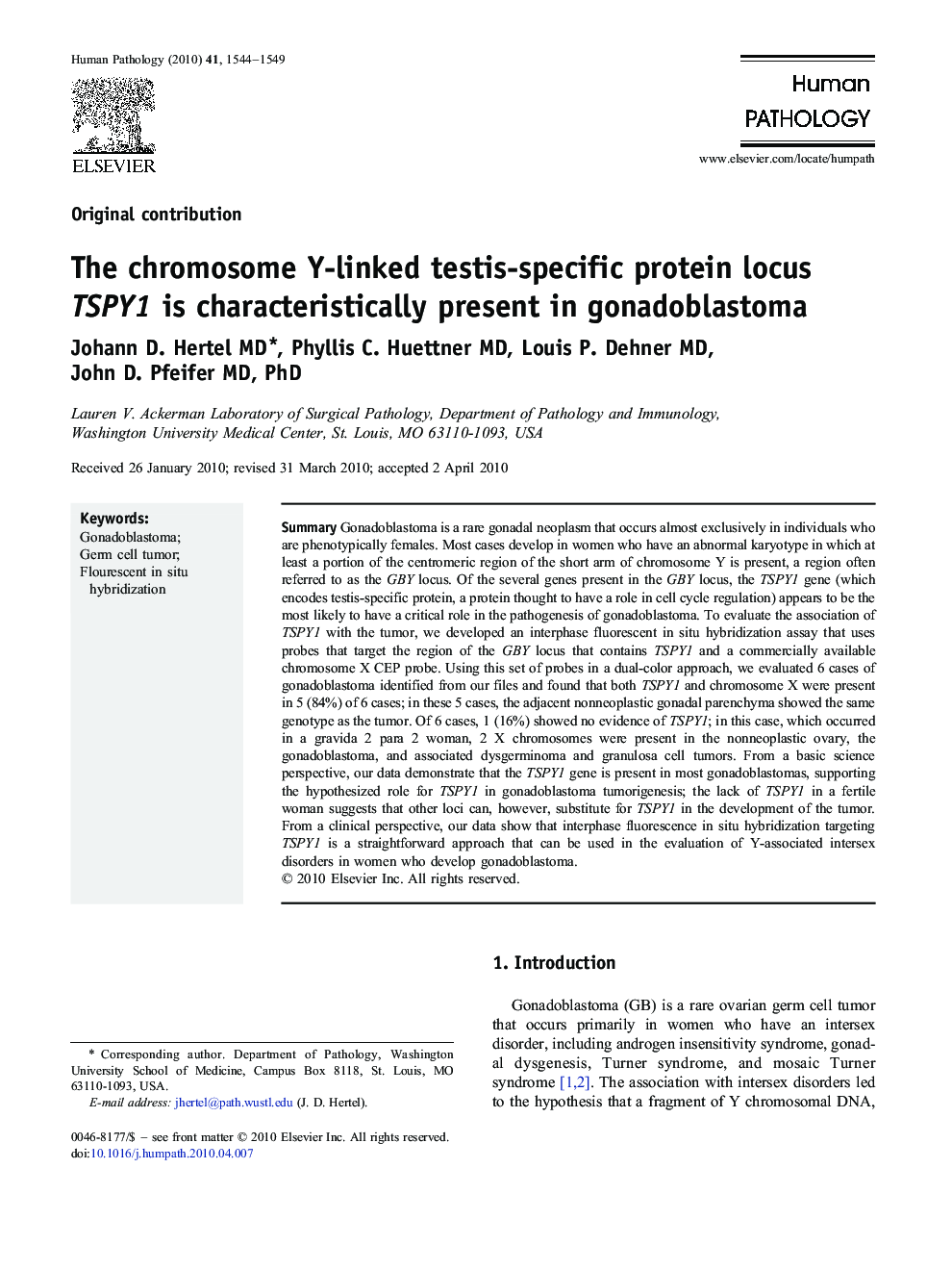| کد مقاله | کد نشریه | سال انتشار | مقاله انگلیسی | نسخه تمام متن |
|---|---|---|---|---|
| 4134254 | 1271452 | 2010 | 6 صفحه PDF | دانلود رایگان |

SummaryGonadoblastoma is a rare gonadal neoplasm that occurs almost exclusively in individuals who are phenotypically females. Most cases develop in women who have an abnormal karyotype in which at least a portion of the centromeric region of the short arm of chromosome Y is present, a region often referred to as the GBY locus. Of the several genes present in the GBY locus, the TSPY1 gene (which encodes testis-specific protein, a protein thought to have a role in cell cycle regulation) appears to be the most likely to have a critical role in the pathogenesis of gonadoblastoma. To evaluate the association of TSPY1 with the tumor, we developed an interphase fluorescent in situ hybridization assay that uses probes that target the region of the GBY locus that contains TSPY1 and a commercially available chromosome X CEP probe. Using this set of probes in a dual-color approach, we evaluated 6 cases of gonadoblastoma identified from our files and found that both TSPY1 and chromosome X were present in 5 (84%) of 6 cases; in these 5 cases, the adjacent nonneoplastic gonadal parenchyma showed the same genotype as the tumor. Of 6 cases, 1 (16%) showed no evidence of TSPY1; in this case, which occurred in a gravida 2 para 2 woman, 2 X chromosomes were present in the nonneoplastic ovary, the gonadoblastoma, and associated dysgerminoma and granulosa cell tumors. From a basic science perspective, our data demonstrate that the TSPY1 gene is present in most gonadoblastomas, supporting the hypothesized role for TSPY1 in gonadoblastoma tumorigenesis; the lack of TSPY1 in a fertile woman suggests that other loci can, however, substitute for TSPY1 in the development of the tumor. From a clinical perspective, our data show that interphase fluorescence in situ hybridization targeting TSPY1 is a straightforward approach that can be used in the evaluation of Y-associated intersex disorders in women who develop gonadoblastoma.
Journal: Human Pathology - Volume 41, Issue 11, November 2010, Pages 1544–1549